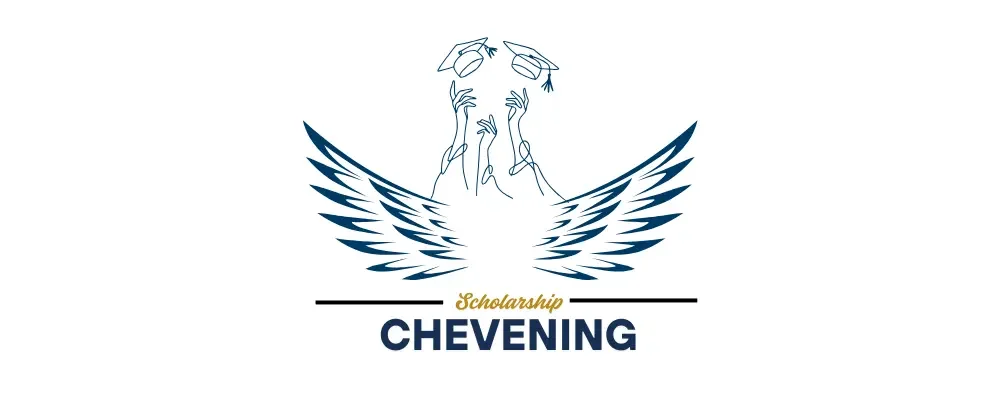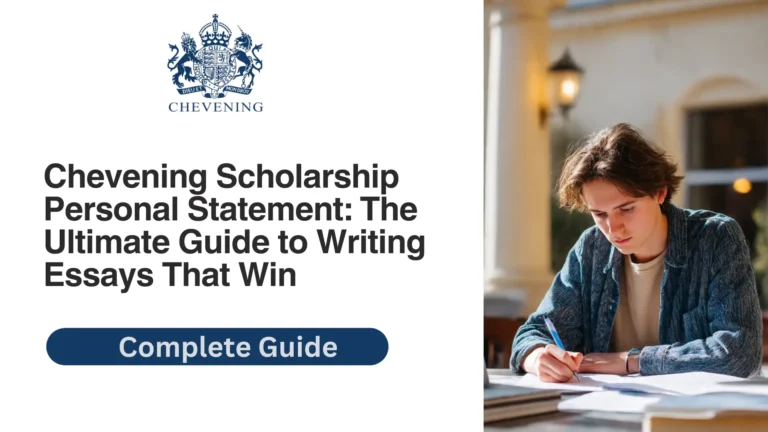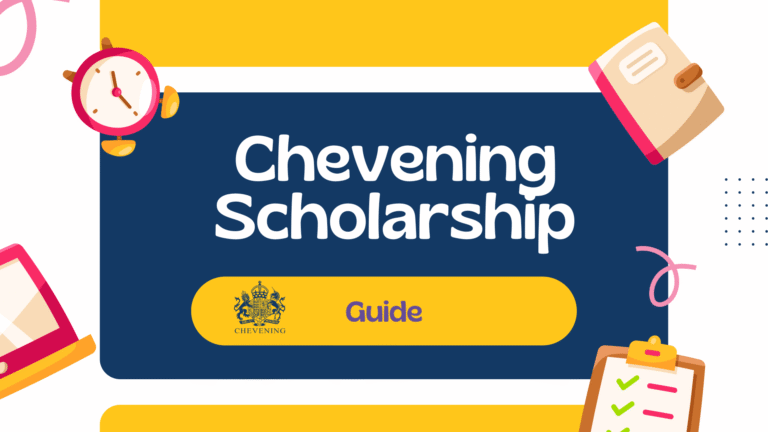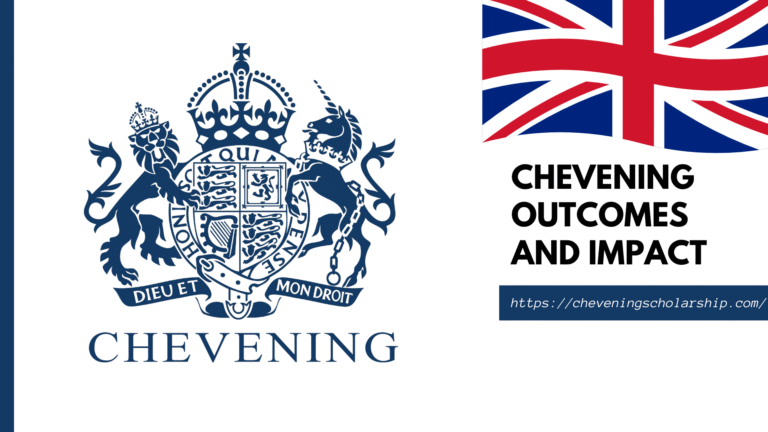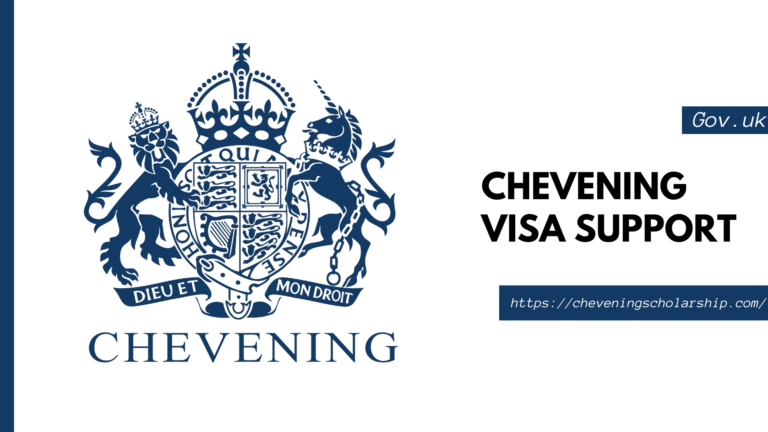Chevening Scholarship Interview Tips: 25 Strategies That Actually Work (From People Who’ve Been There)
Here’s what happened to Ahmad during his Chevening interview in Islamabad. Panel asks: “What’s Pakistan’s biggest challenge in the next decade?” He’d prepared for this. Climate change, he thinks. Or education reform. Or energy crisis. All valid answers.
He freezes. Completely blank.
Ten seconds of silence. Feels like ten minutes. The panel waits patiently. Finally, he blurts out something about infrastructure—not even his sector. The interview continues, but he’s rattled. Every subsequent answer is slightly off. He leaves knowing he blew it.
Plot twist: He got the scholarship anyway.
Why? Because the interview isn’t about perfect answers. It’s about demonstrating who you are under pressure, how you recover from setbacks, and whether you embody what Chevening seeks. Ahmad showed authenticity, humility, and grace under fire. That mattered more than the “right” answer.
This is what most Chevening scholarship interview tips articles won’t tell you: preparation matters, but overthinking kills. The panel isn’t looking for robots reciting perfect responses. They’re looking for future leaders who can think on their feet, communicate clearly, and remain genuine under scrutiny.
So let’s talk about Chevening interview preparation that actually works—not the generic “be confident” advice, but real, specific, battle-tested strategies from people who’ve sat in that uncomfortable chair across from the panel and lived to tell the tale.
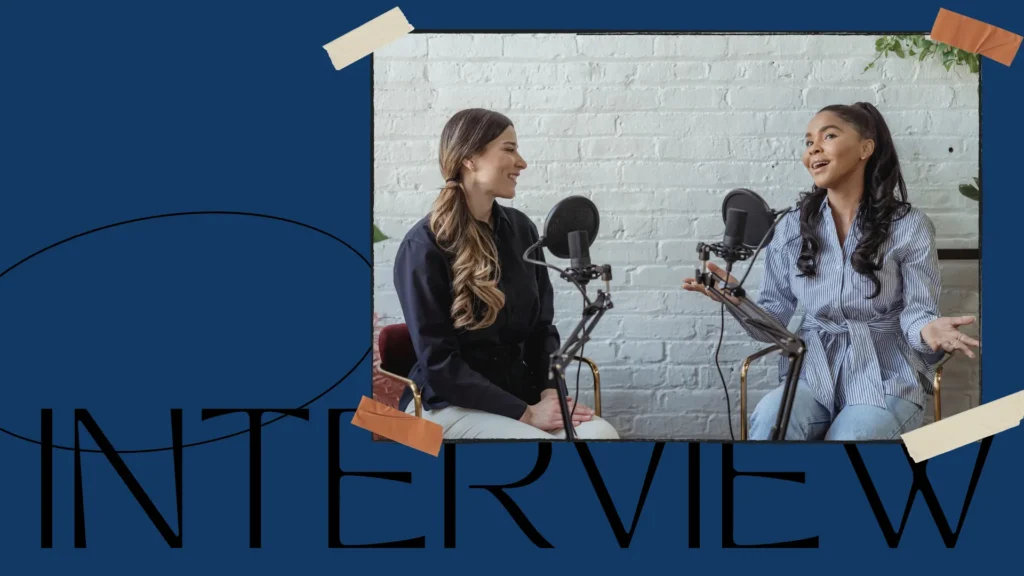
Understanding What They’re Really Assessing
Before we dive into Chevening interview strategies, you need to understand what the panel is actually evaluating.
The Four Pillars They’re Testing
1. Authenticity Can you back up what you wrote in your application? Or did you exaggerate?
Red flag: Your essays say you “led a team of 50” but you can’t articulate what you actually did.
Green flag: You describe specific challenges you faced leading that team and how you solved them.
2. Articulation Can you express complex ideas clearly under pressure?
Red flag: Rambling answers that don’t address the question.
Green flag: Concise responses that hit the point directly.
3. Cultural Intelligence Do you understand UK-home country relations and global contexts?
Red flag: Can’t explain why UK education specifically helps your goals.
Green flag: Clear connection between UK academic strengths and your home country needs.
4. Leadership Potential Will you actually use this scholarship to create change?
Red flag: Vague “I’ll help my country” statements.
Green flag: Specific organizations, roles, and measurable goals post-return.
What They’re NOT Looking For
Let me save you some stress. They’re not expecting:
- Perfect, polished responses to every question
- Memorized speeches
- Zero stumbles or pauses
- Complete agreement with panel perspectives
- Superhuman confidence
They ARE expecting:
- Genuine engagement with questions
- Thoughtful consideration
- Honest acknowledgment when you don’t know something
- Recovery from mistakes
- Authentic passion for your goals

Pre-Interview Preparation: The Foundation
8-12 Weeks Before: Building Your Knowledge Base
Chevening interview preparation checklist starts months before interview day.
Master your application inside-out:
- Read it 10+ times
- Memorize key details and dates
- Prepare to expand on any claim
- Identify potential weak points
- Develop deeper explanations for everything
Research your universities obsessively:
- Know specific courses, modules, faculty
- Understand teaching methodologies
- Read recent research from your program
- Follow program social media
- Connect with current students if possible
Understand your sector deeply:
- Recent policy changes in your field
- Key debates and controversies
- Leading thinkers and organizations
- UK’s role and contributions
- Your home country’s position
- How UK education addresses specific gaps
Current affairs immersion:
- Your home country’s major issues
- UK-home country relations
- Regional geopolitics
- Sector-specific news
- Global challenges relevant to your field
Real preparation looks like: One successful scholar told me she created a 50-page document of potential questions and answers. She didn’t memorize responses, but the process of thinking through each question deeply prepared her to think on her feet.
4-6 Weeks Before: Practice Begins
Chevening interview mock tips for effective practice:
Conduct multiple mock interviews:
- With friends (basic practice)
- With mentors in your field (quality feedback)
- With Chevening alumni (best insight)
- Record yourself (painful but valuable)
What to practice:
- The STAR method (more on this below)
- Concise 2-minute answers
- Handling unexpected questions
- Maintaining composure under pressure
- Speaking clearly and confidently
How to make mock interviews effective:
- Use real Chevening questions
- Set 20-30 minute time limit
- Dress professionally
- Sit at formal table/setup
- Have friends be tough interviewers
- Review recording after
Common mistake: Practicing with friends who are too easy on you. You need people who’ll challenge you.
1-2 Weeks Before: Final Preparation
Chevening interview day tips for the final stretch:
Logistics preparation:
- Confirm interview location (Google Maps it, know exactly where it is)
- Plan route and timing (arrive 30 minutes early minimum)
- Prepare professional outfit (conservative, clean, pressed)
- Gather required documents (passport, copies of application, etc.)
- Check weather forecast (dress appropriately)
Mental preparation:
- Sleep well the week before
- Exercise to manage anxiety
- Practice relaxation techniques
- Visualize successful interview
- Accept that nervousness is normal
Final review:
- Re-read your application one last time
- Review your university choices
- Refresh on current affairs
- Practice introduction (2-minute “tell us about yourself”)
- Prepare 3-5 questions to ask panel
The Questions: What to Actually Expect
The Standard Chevening Interview Questions
Chevening interview question examples that come up in almost every interview:
1. “Tell us about yourself”
Chevening interview personal story should be a 90-second narrative, not a CV recitation.
Bad approach: “I did my Bachelor’s in Economics at Lahore University. Then I worked at XYZ Organization for three years. I’ve always been interested in development…”
Better approach: “I’m a development economist from Pakistan, but my journey started in my village where I saw how lack of access to finance kept families in poverty. That’s why I spent the last three years at a microfinance institution designing products for rural women. My UK master’s will help me scale these solutions nationally…”
Structure:
- Opening hook (who you are + what drives you)
- Key experience/achievement (evidence of your work)
- Bridge to future (why Chevening, why now)
2. “Why Chevening? Why the UK?”
Chevening interview question why study UK:
Weak answer: “The UK has world-class education and I want to study at a prestigious university…”
Strong answer: “I need specific skills in impact evaluation that UK programs excel at. My chosen course at LSE offers the unique combination of quantitative methods and real-world application through their partnership with developing country governments. The UK’s history of evidence-based policy development aligns with what I want to implement back home…”
Key elements:
- Specific skills/knowledge you need
- Why UK uniquely provides this
- Connection to your career goals
- Understanding of UK’s specific strengths
3. “What will you do when you return home?”
Chevening interview career plan tips:
Vague answer: “I’ll work in the development sector and contribute to poverty reduction in Pakistan…”
Specific answer: “I’ll return to my position at the Ministry of Planning where I work in the poverty reduction unit. Specifically, I’ll implement evidence-based targeting mechanisms for social protection programs, using the impact evaluation skills from my UK master’s. In 2-3 years, I aim to influence national policy on conditional cash transfers…”
Must include:
- Specific organization/sector
- Specific role or initiative
- Timeline with milestones
- Measurable goals
- How UK education enables this
4. “Give an example of your leadership”
Chevening scholarship leadership interview tips and using the Chevening interview STAR method:
STAR = Situation, Task, Action, Result
Example structure:
- Situation: “At my NGO, we struggled with 60% staff turnover annually…”
- Task: “As program manager, I was tasked with improving retention…”
- Action: “I designed a mentorship program pairing junior staff with seniors, created clear career paths, and implemented quarterly feedback sessions…”
- Result: “Turnover dropped to 25% within 18 months, saving the organization $50,000 annually in recruitment costs…”
Why STAR works:
- Provides concrete evidence
- Shows your actual contribution
- Demonstrates impact
- Easy to follow narrative
- Reveals problem-solving ability
The Curveball Questions
Chevening interview frequent questions that catch people off-guard:
“What’s your biggest weakness?”
Bad answer: “I’m a perfectionist” or “I work too hard”
Better answer: “I sometimes struggle with delegation because I feel responsible for outcomes. But I’ve been actively working on this—in my last project, I explicitly assigned ownership of three workstreams to team members and focused on coaching rather than doing. It was uncomfortable initially but the team delivered better results than I would have alone…”
Shows:
- Self-awareness
- Growth mindset
- Concrete efforts to improve
- Learning from experience
“How do you handle failure?”
Use a real failure: “In my first year managing a project, I missed a critical deadline because I didn’t build in buffer time for regulatory approvals. The project delayed six months and we lost a funding tranche. I learned to map all dependencies upfront, build realistic timelines, and communicate early when issues arise. Since then, I haven’t missed a deadline…”
Shows:
- Honesty
- Accountability
- Learning ability
- Practical application
“Why should we select you over other candidates?”
Don’t compare yourself to others: “I can’t speak to other candidates, but what I offer is three years of direct experience implementing exactly the kind of programs I’ll study. I have a clear plan for how I’ll use this education, existing partnerships to support implementation, and track record of turning learning into impact. Plus, I’m committed to maintaining these connections and becoming an active part of the Chevening network…”
Shows:
- Confidence without arrogance
- Clear value proposition
- Genuine commitment
- Understanding of Chevening community
The Policy/Current Affairs Questions
Chevening interview panel questions often test your awareness:
“What’s the biggest challenge facing your country?”
Framework for answering:
- Choose challenge relevant to your field
- Demonstrate nuanced understanding
- Acknowledge complexity
- Connect to your work
- Show how UK education helps address it
Example: “I’d say education quality, particularly the gap between urban and rural areas. We’ve made progress on access—80% enrollment—but learning outcomes lag. This connects to my work in curriculum development where I’ve seen how teacher training and resource allocation drive outcomes. Understanding UK’s evidence-based approaches to education policy will help me design interventions that actually improve learning, not just enrollment…”
“What do you think about [recent political event in your country]?”
Handle diplomatically:
- Show awareness
- Present balanced perspective
- Connect to development impacts
- Avoid overly political stance
- Focus on implications for your work
You don’t need to be political scientist. You need to show informed awareness and thoughtful perspective.
Interview Day: Execution Strategies
Chevening Interview Dressing Tips
What to wear:
For men:
- Dark suit (navy or charcoal)
- White or light blue shirt
- Conservative tie
- Polished leather shoes
- Minimal jewelry
- Well-groomed appearance
For women:
- Business suit or professional dress
- Conservative colors
- Modest neckline and hemline
- Closed-toe shoes
- Minimal jewelry
- Professional hairstyle
For both:
- Ensure clothes are pressed and clean
- Nothing too tight or too loose
- Comfortable (you’ll be sitting for 30 minutes)
- Climate-appropriate (bring jacket or cardigan)
- Aligned with cultural norms if relevant
Why this matters: You want panel focused on your words, not your appearance. Conservative professional dress is never wrong for Chevening interviews.
Chevening Interview Body Language
What your non-verbals communicate:
Positive body language:
- Maintain eye contact (with all panel members)
- Sit upright but not rigid
- Lean slightly forward (shows engagement)
- Use hand gestures naturally (not excessively)
- Smile appropriately
- Nod to show understanding
Negative body language to avoid:
- Crossing arms (defensive)
- Slouching (disinterested)
- Fidgeting (nervous)
- Looking down constantly (unsure)
- Excessive hand movements (distracting)
- No eye contact (evasive)
The eye contact strategy: If there are three panel members, distribute your eye contact. Start with person who asked question, but include others as you answer.
Managing the Interview Dynamic
First 2 minutes are crucial:
When you enter:
- Greet panel warmly
- Shake hands if offered (firm, brief)
- Wait to be invited to sit
- Place bag/papers neatly beside you
- Make brief small talk if initiated
- Breathe and smile
Your introduction: They’ll likely start with “tell us about yourself.” This sets the tone. Deliver your prepared 90-second intro confidently.
During the interview:
How to answer Chevening interview questions:
The 30-second rule: Pause before answering. Take up to 30 seconds to collect thoughts. This shows thoughtfulness, not uncertainty.
The 2-minute rule: Most answers should be 1-2 minutes. If you go longer, they’ll interrupt or lose engagement.
Structure:
- Direct answer to the question
- Supporting evidence/example
- Conclusion/connection to your goals
When you don’t know: “That’s a great question that I haven’t considered deeply. Let me think through it… [pause 10 seconds]… I’d approach it from the perspective of…”
Never:
- Make up facts
- Pretend expertise you don’t have
- Become defensive
- Argue with panel
If you blank: “Could I take a moment to think about that?” or “Could you rephrase the question?”
If you misunderstand: “Just to clarify, are you asking about [X] or [Y]?”
Chevening Interview Timing Tips
Managing your time:
- You have roughly 20-30 minutes total
- That’s 10-15 questions average
- Keep answers concise
- Let them guide the pace
- Don’t rush or dominate
If they signal wrapping up: They might say “we only have a few minutes left.” This isn’t a hint that it went badly—it’s time management. Tighten your remaining answers.
Your questions for them: Save 2-3 questions for when they ask “what questions do you have?”
Good questions:
- “What qualities do successful Chevening scholars typically demonstrate?”
- “How can scholars make the most of the network?”
- “What advice would you give someone starting their Chevening journey?”
Avoid asking:
- Questions answered on website
- Questions about selection timing
- Questions about application status
Special Circumstances
Chevening Virtual Interview Tips
If your interview is online (increasingly common):
Technical preparation:
- Test technology 24 hours before
- Have backup device ready
- Ensure strong internet connection
- Test audio and video quality
- Choose quiet, professional background
- Have good lighting (face fully visible)
During virtual interview:
- Look at camera, not screen (simulates eye contact)
- Stay centered in frame
- Minimize on-screen distractions
- Dress professionally (full outfit, not just top half)
- Have water nearby but off-camera
- Keep notes out of view (don’t read from them)
Virtual-specific challenges:
- Slight delays in audio (pause after panel speaks)
- Can’t read body language as well (use more verbal affirmations)
- Technical glitches (stay calm, have backup plan)
Chevening Interview Tips Pakistan (and Other Countries)
Country-specific considerations:
Interview locations: Know exactly where your interview will be (usually British High Commission or British Council).
Cultural considerations:
- Some countries have more formal interview cultures
- Adjust communication style appropriately
- But Chevening values direct communication—don’t be too deferential
Language: Interviews are in English. If English isn’t your first language:
- Speak slowly and clearly
- It’s okay to ask for clarification
- Simple, correct English beats complex, error-filled English
- Practice specifically helps with language anxiety
Panel composition: Usually includes:
- British Embassy/High Commission staff
- British Council representatives
- Sometimes previous scholars or local partners
- Sometimes UK-based via video
Common Mistakes to Avoid
Chevening Interview Common Mistakes
1. Over-rehearsing to the point of sounding robotic
Problem: Memorized answers sound fake Solution: Know your talking points, not exact words
2. Not actually answering the question asked
Problem: Panel has to re-ask or clarify Solution: Listen carefully, pause before answering, address question directly
3. Badmouthing anyone
Problem: Shows poor professionalism Solution: Frame challenges diplomatically, focus on learning
4. Being too modest or too boastful
Problem: Either undersells you or alienates panel Solution: State achievements factually with evidence, give credit to teams where appropriate
5. Not showing genuine passion
Problem: Seems like you’re just after free education Solution: Let your authentic motivation show, speak about your work with energy
6. Forgetting it’s a conversation, not an interrogation
Problem: One-word answers or overly stiff responses Solution: Engage naturally, show personality, ask for clarification if needed
7. Not connecting answers back to Chevening/UK
Problem: Could be applying to any scholarship Solution: Always link back to why UK education specifically helps your goals
Chevening Interview Question Handling
When panel challenges your answer:
They might say: “But don’t you think [alternative view]?”
This is NOT an attack. They’re testing:
- How you handle disagreement
- Whether you can see multiple perspectives
- If you become defensive
- Your analytical thinking
Good response: “That’s a valid perspective. I can see how [acknowledge their point]. From my experience [present your view with evidence], but I recognize there are multiple valid approaches…”
Shows:
- Intellectual flexibility
- Respect for other perspectives
- Confidence without stubbornness
- Thoughtful reasoning
Mental Preparation and Confidence
Chevening Interview Mental Preparation
The week before:
What to do:
- Maintain normal routine
- Exercise (reduces anxiety)
- Get good sleep
- Eat well
- Practice relaxation techniques
- Visualize successful interview
- Review notes but don’t cram
What to avoid:
- All-night study sessions
- Excessive caffeine
- Comparing yourself to others
- Doom-scrolling about interviews
- Obsessing over worst-case scenarios
Chevening Interview Confidence Tips
Building genuine confidence:
Confidence comes from:
- Thorough preparation (you’ve done the work)
- Knowing your story inside-out
- Understanding that panel wants you to succeed
- Accepting that nervousness is normal
- Having backup answers for everything
- Trusting your experience and knowledge
Confidence doesn’t come from:
- Pretending to know everything
- Trying to impress with vocabulary
- Hiding weaknesses or mistakes
- Acting like someone you’re not
Day-of confidence boosters:
- Arrive early (rushing kills confidence)
- Review your “wins” list (remind yourself of accomplishments)
- Power pose for 2 minutes before entering (actually works)
- Remember: You were shortlisted because you deserve to be there
- Focus on sharing your authentic story, not being perfect
Chevening Interview Nerves Tips
Managing anxiety:
Before entering:
- Deep breathing (4 counts in, 4 counts hold, 4 counts out)
- Progressive muscle relaxation
- Remind yourself: panel is human, not adversary
- Reframe nervousness as excitement
If you freeze during interview:
- Acknowledge it: “I apologize, I’m a bit nervous. Could you repeat the question?”
- Take a sip of water
- Take a breath
- Remember Ahmad from the opening story—recovery matters
The truth: Every single person before you was nervous. Successful scholars weren’t anxiety-free—they managed it better.
After the Interview
Chevening Interview Follow-Up Tips
What to do immediately after:
- Thank the panel
- Leave professionally
- Don’t linger or try to add more
- Exit the building before reacting
Within 24 hours:
- Send brief thank-you email (optional, not required)
- If you do email, keep it short and professional
- Don’t ask about timeline or outcomes
- Simply thank them for the opportunity
Sample thank-you: “Dear [Panel], Thank you for the opportunity to interview for the Chevening Scholarship today. I appreciated the thoughtful questions and enjoyed our conversation about [specific topic]. I look forward to the outcome. Kind regards, [Your name]”
Then what:
- Wait. Results typically come in May-June.
- Don’t obsess over how it went
- Continue with your life and work
- Prepare for either outcome
Chevening Interview Reflections
Post-interview analysis:
Within a week, write down:
- Questions you were asked
- How you answered
- What went well
- What you’d improve
- Unexpected questions
- Panel dynamics you noticed
Why this matters:
- If you need to reapply, you have notes
- Helps you process the experience
- Provides closure
- Can help others preparing
- Documents your growth
Share your experience:
- With other applicants (pay it forward)
- In Chevening communities
- Maybe in a blog post
- Help demystify the process
The Real Success Formula
Here’s what I’ve learned from talking to dozens of successful Chevening scholars about their interviews:
The ones who succeeded weren’t necessarily the most qualified on paper.
They were the ones who:
- Prepared thoroughly but stayed authentic
- Demonstrated clear thinking under pressure
- Connected their past, present, and future coherently
- Showed genuine passion for their work
- Remained humble while confident
- Recovered gracefully from mistakes
- Made panel believe in their potential
- Treated it as conversation, not performance
Your Chevening interview isn’t about:
- Having perfect answers
- Never stumbling or pausing
- Impressing with vocabulary
- Hiding any weakness
- Being someone you’re not
It IS about:
- Demonstrating who you really are
- Showing how you think
- Communicating your genuine passion
- Proving you’ll use this opportunity meaningfully
- Making panel confident you’ll represent Chevening well
The interview tests whether you can:
- Think critically under pressure
- Communicate clearly and authentically
- Demonstrate leadership qualities
- Handle challenges gracefully
- Stay true to yourself while being professional
And honestly? If you’ve made it to interview stage, they already think you’re qualified. The interview just confirms whether you’re the person your application suggested you are.
So be that person. Prepared, passionate, authentic, and purposeful.
Getting ready for your Chevening interview? What’s your biggest concern or question? Share in the comments and let’s help each other prepare.
Past interviewees: What question caught you most off-guard? What advice would you give candidates? Share your wisdom below.
Remember: Thousands of people have sat in that interview seat, felt that nervousness, faced those questions. They survived. They succeeded. You will too.
Now go prepare. You’ve got this.
